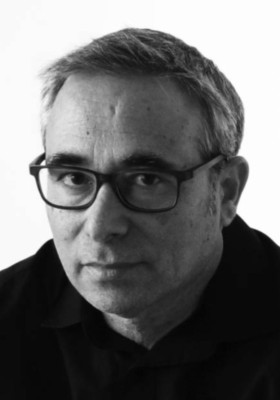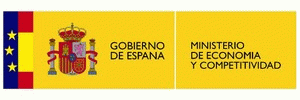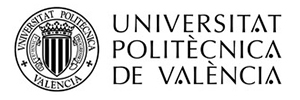


English

Español

Italiano
KEYNOTE SPEAKER
10 Novembre 2016
Aula Magna dell'Università degli Studi di Firenze
Piazza San Marco, 4, Firenze
| 10.30 | |
La torre de la Illeta en la defensa de la costa de Alicante, España. Estudio histórico y evolución constructiva |
|
 |
Pablo Rodriguez-Navarro |
| Universitat Politécnica de Valencia, Valencia, Spain | |
Abstract - The Illeta Tower is located near El Campello city (Alicante) on a small plain, a few meters from the sea, between the Clot de l' Illot located on the south side of the tower, and Almadrava beach located on its northern part. Its location seems to coincide with the position occupied by an ancient medieval tower, now disappeared that had the function of protecting the settlement in the Illeta dels Banyets, today connected to the coast by an artificial isthmus with an important archaeological site, which was occupied on the Iberian period and later with the Roman presence. The Illeta Tower, like many other coastal towers, was built during the reign of Felipe II, as part of the defense system of watchtowers of the eastern coast of the XVI and XVII centuries. Built between 1554 and 1557, it consists of large format blocks in his first three rows and in the rest ashlars. It has a circular floor and piramidal form, highlighting the rest of watchtowers for its dimensions and geometric characteristics. Consists of a single room covered by a dome, which is currently accessed by a metal staircase built in the intervention in 1991. Also from this period are the brackets and breastplate as a garland tops its walls limiting its cover, element that contrasts sharply with Acuña claims and the images earlier than its restoration. Through the historical study, the morphological analysis, the interpretation of its constructive system and by reading the walls, we will do the study of the tower, determining its transformations, and approaching through graphical analysis to knowledge of the original tower.Profilo dell'Autore - Pablo Rodriguez-Navarro (Valencia 1963) è professore del Dipartimento di Architettura espressione grafica del Politecnico di Valencia (Spagna) (UPV) dal 1994. Presso questa stessa Università, ha conseguito il titolo di architetto tecnico. Successivamente si è laureato in Storia dell'Arte presso l'Università di Valencia, ha completato la sua formazione ottenendo la Laurea in Ingegneria Edile presso l'Università di Castilla-La Mancha (Spagna). E’ stato visiting professor presso il Politecnico di Milano e presso l'Università degli Studi di Firenze. Ha sviluppato la sua ricerca presso l'Istituto per i Restauro dei monumenti della UPV. Ha conseguito il proprio Ph.D. in "Espressione Grafica Architettonica" presso UPV, con un punteggio di “Eccellente Cum Laude” e premio straordinario. Ha vinto il Premio Internazionale di Ricerca Ibn al-Abbar nel 2010. E' specializzato in rilievo digitale, utilizzando tecnologie laser scanner, rilievo fotogrammetrico, UAV, trattamento dell’immagine e computer grafica 3D. Studioso dell’architettura fortificata, ha guidato molteplici progetti di ricerca sull'architettura di terra in Marocco. Conduce come coordinatore il progetto di ricerca nazionale sulle torri di guardia della costa valenciana (secoli dal XVI al XVIII): il Progetto TOVIVA. Fa parte di vari comitati scientifici di conferenze e riviste di prestigio, come Disegnarecon, VSMM, Digital Heritage, Digital Applications in Archaeology and Cultural Heritage, CIATTI, Arqueologica 2.0, FORTMED,… Una selezione della sua produzione scientifica recente è disponibili in academia.edu al link:
|
|
| 11.10 | |
Torri e fortezze del Mediterraneo nella cartografia nautica della Marina militare francese (seconda metà XVII - metà XVIII secolo) |
|
 |
Anna Guarducci |
Università degli Studi di Siena
|
|
Abstract - This work comes from an accurate research in the archives of Paris. It aims to underline the importance of Mediterranean Marine Atlases realized by the “hydrograph engineers” of French Navy since 1679. These atlases (especially handmade) are very different from traditional small scale nautical maps of medieval and modern age. French atlases characterize themselves as original and exact surveys, made always from the sea; they were characterized by drawings and maps about specific subjects, like: harbors and coves, fortified cities and single towers (overall, perspective or plan views). Among all, the first “Portolano-Map of Mediterranean Sea” stands out: six handmade atlases drown by the engineers Nicolas Pène and Jacques Pétré in 1679-1686, on clear information from minister Colbert and from the king Louis XIV himself. At the time France was at war against Spain, England and Netherlands and she needed the most exact maps of “Mediterranean theatre”; therefore, these atlases are real geo-political and military instruments.Profilo dell'Autore - Anna Guarducci è professore associato di Geografia presso il Dipartimento di Scienze Storiche e dei Beni Culturali dell’Università degli Studi di Siena dal 2005, dove ha svolto attività di docenza a partire dal 1999. Nel 2014 ha ottenuto l'Abilitazione nazionale come Professore Ordinario. Laureata presso l'Università di Firenze (1993), è Dottore di Ricerca in Geografia storica e organizzazione paesistico-territoriale (Firenze, 2002), con tesi su “Il sistema termale toscano dal Medioevo ad oggi. Geografia storica e beni culturali”. Svolge attività di ricerca scientifica dal 1993, spesso in collaborazione con enti locali della Toscana ed ha partecipato alla realizzazione del “Piano di Indirizzo territoriale della Toscana con valenza di Piano Paesaggistico”, coordinando il gruppo di lavoro sui “Paesaggi Storici” e sui “Processi Storici in età moderna e contemporanea”. Le linee di ricerca riguardano: temi e problemi del paesaggio, dell’ambiente, del patrimonio culturale e della storia del territorio (con speciale attenzione per la Toscana), nonché l’analisi e il censimento delle fonti geo-storiche, in particolare la cartografia dei secoli XV-XIX. E' responsabile scientifico dei progetti “Imago Tusciae. Catalogo digitale della cartografia storica della Toscana” (www.imagotusciae.it) e Toscana Tirrenica (www.toscanatirrenica.it).
|
|
| 11.50 | |
La trasformazione veneziana di Ravenna: la Rocca Brancaleone (1457-1470) sulla chiesa di S. Andrea dei Goti (518) |
|
 |
Alessandro Camiz |
| Girne American University, Cyprus | |
Abstract - Perhaps for the effects of the damnatio memoriae that followed the Agnellian censorship of Arian churches, Ravenna completely forgot the Church of the Goths; yet numerous documents allow us to locate its remains. It was a massive circular building with a central plan created on the ruins of a Roman building, as described by the Chronicle. The Arian bishop Unimundus built the church out of town in the XXIV year of Theodoric’s reign (A.D. 518). According to another source, Theodoric himself built the church near the Tremedula gate and the church of S. Stefano de Oliviis. The church was rededicated to St. Eusebius after being converted to the Catholic cult. The title reported by Agnellus, in our opinion, refers to the Catholic rededication, as well as the Arian Cathedral of Pavia, also rededicated to St. Eusebius. Near the church in the IX cent. a monastery dedicated to St. Andrew was built. The building itself is described as Ecclesia Gothica in another part of the Chronicle within the architectures that Theodoric built during his reign and cited in numerous other medieval notarial documents as ecclesia gothica. In the fifteenth century during the construction of the Rocca Brancaleone, the defensive system of the city incorporated the building, turning it into a dungeon. This architecture is a singular example of continuity of use from the first century to contemporary times, its original function of thermal conditioner, possibly part of a Roman thermal plant, was maintained, so as to retain the title of the ice tower (torre della ghiacciaia), in spite of a total cancellation of the collective and historical memory of its existence. All consulted authors, needless here to repeat the entire list, but already the Rossi referred to the church as demolished, report the building as demolished for the construction of the fortress, which cannot find any documental or material confirmation. The architect dismantled the stone cladding and used it for the foundations of the fort, but preserved the core wall. It is an exceptional material document, perhaps the only Gothic building in Ravenna not having suffered heavy nineteenth-century restorations and preserved to this day thanks to the new Venetian use.Profilo dell'Autore - Alessandro Camiz, Ph.D. (1965, Roma-Italia), architetto, è direttore del Dipartimento di Architettura d'interni (inglese), Asst. Prof. Dr. presso la Facoltà di Architettura, Design e Belle Arti, e direttore del Centro Internazionale di Studi sul Patrimonio, Girne American University, Cipro. Direttore di ricerca della Associazione per il dialogo storico e della Ricerca (AHDR), è membro fondatore della Rete di Cipro di morfologia urbana (CyNUM). Cultore della materia materia presso la cattedra di progettazione architettonica e urbana (Prof. Giuseppe Strappa, "Sapienza" Università di Roma) e professore aggiunto presso la Facoltà di Architettura dell'Università di Miami. Ha collaborato con Sartogo Architetti Associati in diversi progetti come la Nuova Cancelleria dell'Ambasciata Italiana a Washington DC (1993-2001), Nuovo insediamento universitario integrato, Bologna-Lazzaretto (con R. Meyer, 2000), sede di ricerca del gruppo, Hong Kong (2001), Chiesa complesso annuncio parrocchiale di S. Volto di Gesù, Roma (1998-2006), Roma interrotta-Uneternal City, XI Biennale di Architettura, Venezia (2008). È membro dal 2003 di Storia della città (fondata da Enrico Guidoni), dal 2007 del International Seminar on Urban Form e dal 2014 dell'ICOMOS Italia. I suoi interessi principali sono morfologia urbana, teorie architettoniche e tipologiche, storia medievale e moderna, il collegamento tra archeologia e progettazione architettonica contemporanea. Membro del comitato scientifico del Girne American University Journal of Social and Applied Science e di Phlogiston, Journal of the History of Science, Museum of Science and Technology, Beograd. Ha frequentato gli studi post-dottorato presso il Dipartimento di Architettura della "Sapienza", Università di Roma, dottorato di ricerca in storia delle città da "Sapienza", Università di Roma e una laurea in Architettura presso "Sapienza", Università di Roma, Italia. Ha pubblicato libri e articoli su “Urban morphology”, “Il tesoro delle città”, “Storia dell`urbanistica”, “Schifanoia, a cura dell`Istituto di studi rinascimentali di Ferrara”. |
|
| search engine by freefind |
|
|
|
|||







